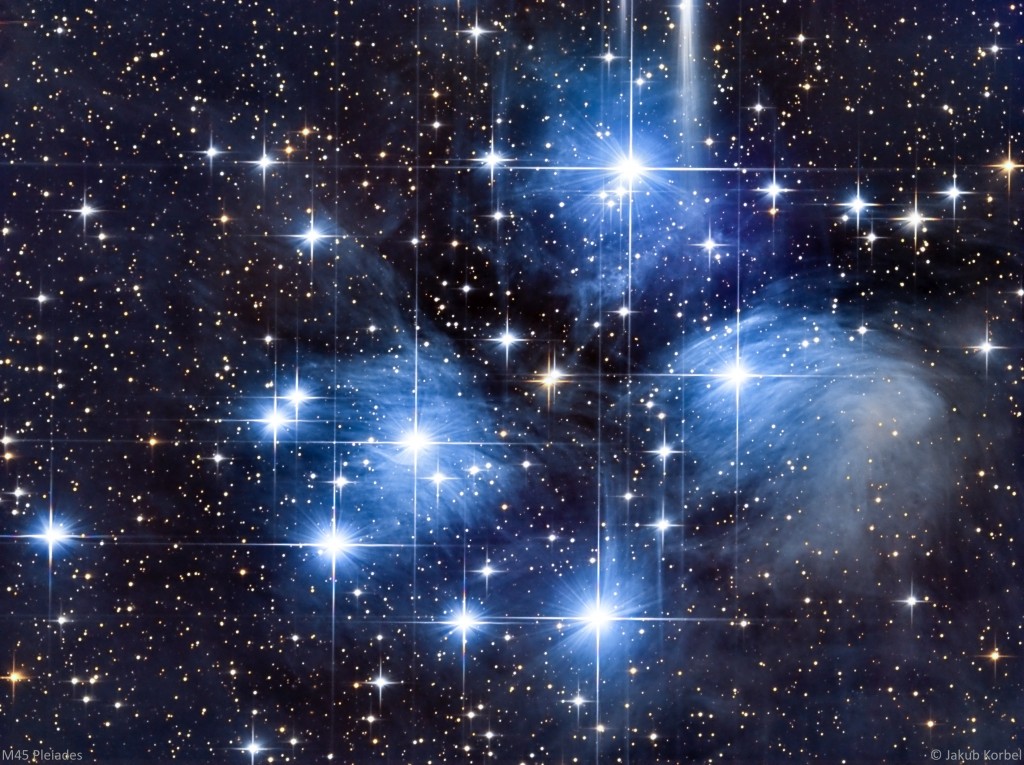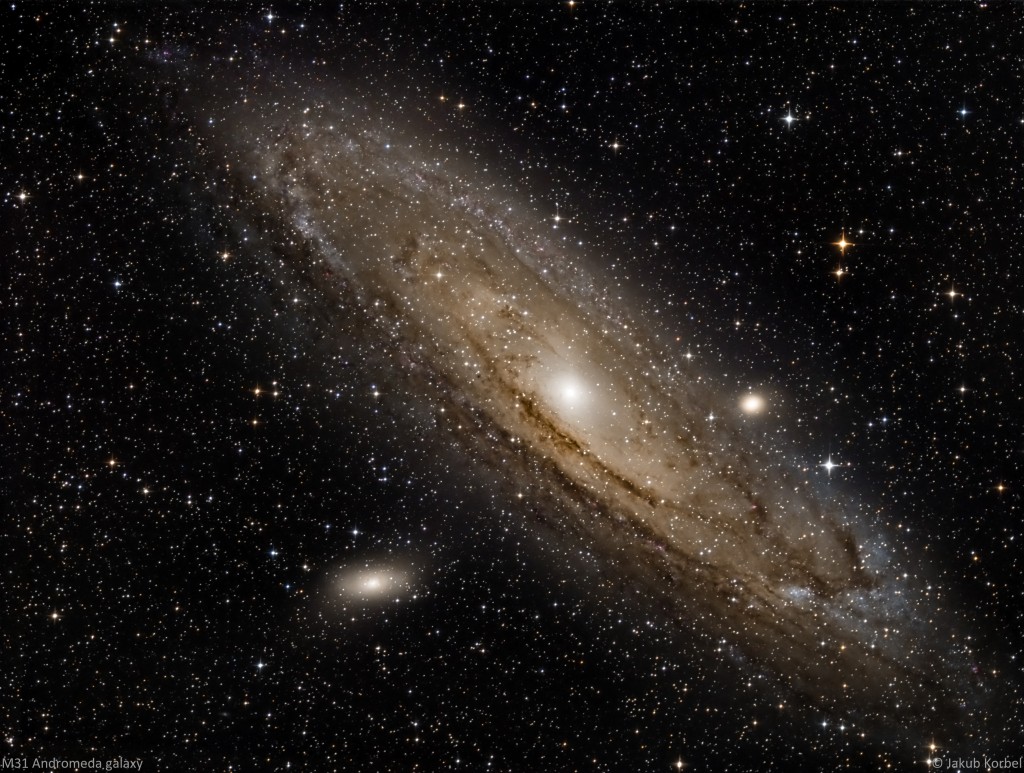Probably the most famous open cluster, visible by the naked eye is called Pleiades, Subaru, or Seven Sisters. Charles Messier cataloged this DSO under number 45 (M45). This cluster is located in the constellation Taurus. It’s the closest cluster to the Solar system (430 light years), has 8 light years in diameter and it’s characterized by the nebulosity – reflective illumination of the space dust by the blue light of the hot, young stars. The brightest stars have names: Alcyone, Atlas, Electra, Maia, Merope, Taygeta, Pleione, Celaeno, and Sterope.
NGC 7635 Bubble Nebula
NGC 7635, known as Bubble Nebula is an HII region in the constellation Cassiopeia. Bubble shape structure is caused by the solar wind caused by a massive star.
Well, I must admit, the Hubble Space Telescope has a better resolution, but my telescope has a better price-performance ratio.
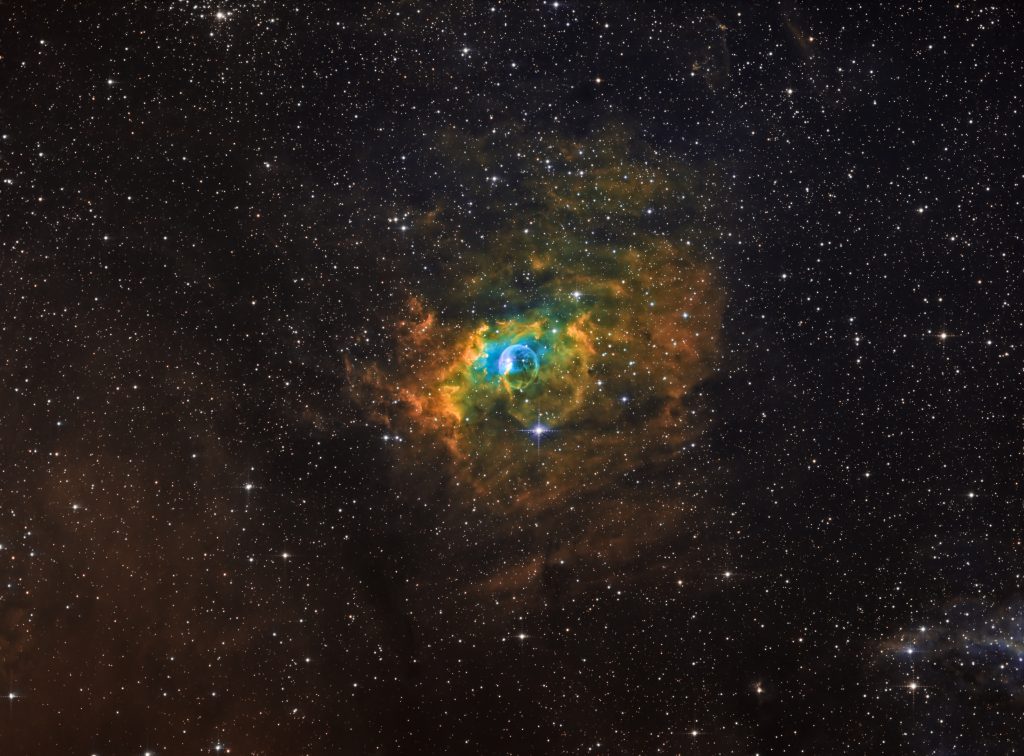
| Telescope: | Newton 254/1000 mm |
| Aperture: | 254 mm |
| Focal length: | 730 mm |
| Mount | Gemini G53f |
| Autoguiding | ZWO 174MM, TS 60/240 mm |
| Camera: | Moravian instruments G2 8300M @ -30C |
| Corrector: | ASA 0.73 reducer |
| Filters: | Baader Ha, OIII, SII |
| Exposure: | 39x Ha, 35x OIII, 32x SII, 300 s, bin 1×1 |
M15 Globular cluster in Pegasus
Globular cluster in Pegasus is very far from Earth, specifically 33 600 light years and its diameter is approximately 175 light years. It contains more than 100 000 stars.
Most of the globular clusters are quite bright (M15 has magnitude 6.2), therefore there is no long exposure required. On the other hand longer exposures might overexpose the core, therefore I selected exposure time to 2 minutes.
IC1805 Heart nebula
This nebula’s visual angle (visual size) is several times bigger than the visual angle/size of the full Moon; therefore I had to use the shortest focal length I have available. For DSOs like that, I have a small Newtonian telescope with an aperture of 150 mm and a focal length of 600 mm. The focal length was reduced by the ASA reducer to 438 mm.
Heart nebula is very dim DSO; therefore narrow band is a good option to get some contrast. I collected a lot of data for all 3 channels: Ha, OIII, and SII. The final picture was composed in the Hubble palette. This means OIII goes into blue, Ha into green, and SII into the red channel.
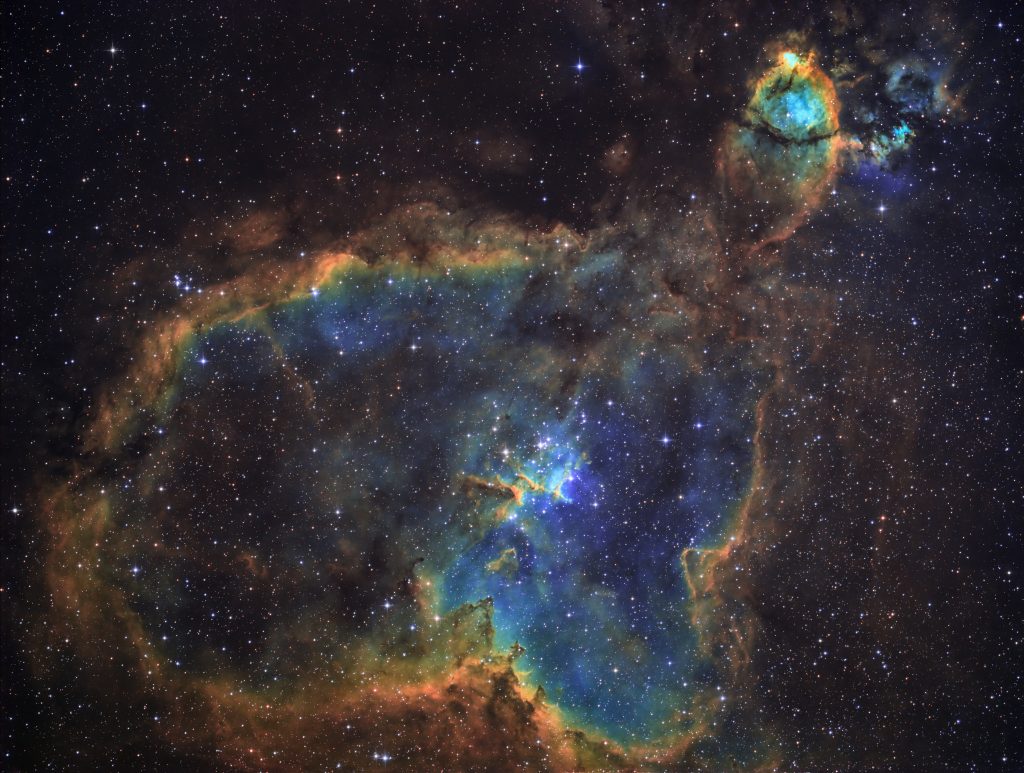
| Telescope: | Newton 150/600 mm |
| Aperture: | 150 mm |
| Focal length: | 438 mm |
| Mount | Gemini G53f |
| Autoguiding | ZWO 174MM, TS 60/240 mm |
| Camera: | Moravian instruments G2 8300M @-30C |
| Corrector: | ASA 2″ reducer 0.73 |
| Filters: | Baader Ha 7 nm, OIII 8.5 nm SII 8nm |
| Exposure: | 17xHa, 21xOIII, 25xSII 600 s bin 1×1, |
| Date: | 2015-11-09 |
NGC6960 Veil nebula
For the third time I am trying to capture the whole Veil nebula, but again, there is a part missing. This time I used the smallest telescope, I have at home – newton 150/600, reduced to focal length 438 mm, by ASA 0.73 reducer. This picture contains the first picture in the left top corner and the second picture in the right bottom corner. Anyway, there is still something missing, therefore next time I have to reduce the focal length even more or do a mosaic.
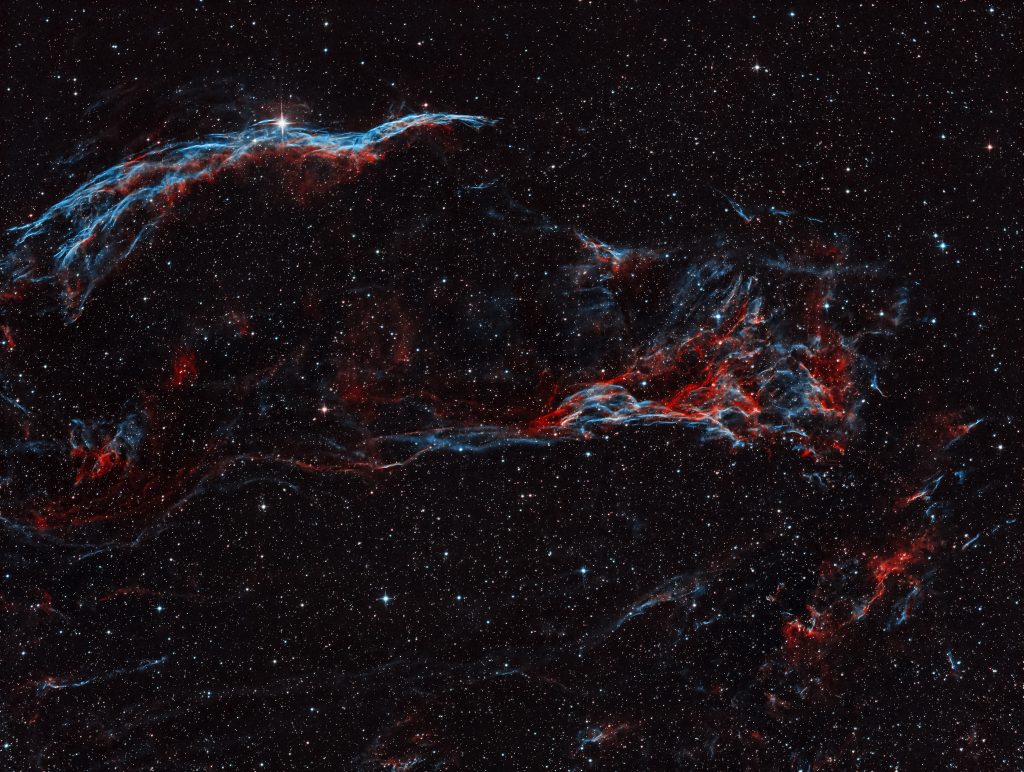
| Telescope: | Newton 150/600 mm |
| Aperture: | 150 mm |
| Focal length: | 438 mm |
| Mount | Gemini G53f |
| Autoguiding | ZWO 174MM, TS 60/240 mm |
| Camera: | Moravian instruments G2 8300M @-30C |
| Corrector: | ASA 2″ reducer 0.73 |
| Filters: | Baader Ha 7 nm, OIII 8.5 nm SII 8nm |
| Exposure: | 9xHa, 9xOIII, 600 s, bin 1×1 |
| Date: | 2015-11-09 |
M31 Andromeda galaxy
Andromeda galaxy is the closed galaxy of our home – Milky Way galaxy. The diameter of Andromeda is approximately 220,000 light years; which is twice more than has Milky Way. It’s only 2.5 million lights away and it’s getting closer. The collision with the Milky Way is predicted to happen in approximately 4 billion years.
This DSO is one of the brightest and the biggest, which makes it relatively easy to photograph. This is actually my second attempt of Andromeda galaxy. One year ago with DSLR camera the picture was not looking so great, therefore I was waiting a year and here is the result:
-
Recent Posts
Recent Comments
Archives
- October 2023
- September 2023
- July 2023
- May 2023
- April 2023
- March 2023
- February 2023
- October 2022
- September 2022
- August 2022
- July 2022
- June 2022
- May 2022
- March 2022
- February 2022
- January 2022
- August 2021
- July 2021
- April 2021
- February 2021
- October 2020
- September 2020
- August 2020
- July 2020
- June 2020
- May 2020
- April 2020
- March 2020
- September 2019
- August 2019
- June 2019
- May 2019
- April 2019
- March 2019
- February 2019
- January 2019
- December 2018
- November 2018
- October 2018
- September 2018
- June 2018
- April 2018
- March 2018
- January 2018
- November 2017
- October 2017
- September 2017
- August 2017
- July 2017
- June 2017
- May 2017
- April 2017
- March 2017
- February 2017
- January 2017
- December 2016
- October 2016
- September 2016
- August 2016
- June 2016
- May 2016
- April 2016
- February 2016
- December 2015
- November 2015
- September 2015
- August 2015
- June 2015
- April 2015
- March 2015
- February 2015
- September 2014
Categories
Meta

